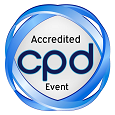
Christiana Nwachukwu
Union County College, USA
Title: Flipped classrooms: A best practice approach for effective global education and training
Biography
Biography: Christiana Nwachukwu
Abstract
Background/Introduction: The Education-practice gap remains a barrier to effective nurse training. The evolving complexities of the health care system makes it imperative to re-evaluate the current instruction process, modify and adopt a best practice approach for quality outcomes and professional growth. There is a dire need for educators to keep pace with the changing realities and for nursing to compete effectively with other health care professions. Methods: Using a quantitative, quasi-experimental research design, the researcher evaluated the effects of two instructional methodologies, the flipped instruction model (FIM) and the traditional instruction format (TIF) using the pretest, posttest scores of practical nursing students. The tests were for 3 topics, COPD, diabetes and hypertension. 44 students enrolled in the Adult Health I course, recruited via a convenience sampling method. 23 of these students experienced the TIF, while the other 21 experienced the FIM. A total of 19 participants represented the ESL subgroup. Results/Finding: The results of the statistical analysis using chi-square test did not reveal any statistically significant difference between the 2 classrooms with p-values of (COPD=1.0, DM=0.266, HTN=0.488). Analysis of Covariance (ANCOVA) revealed statistically significant results for the DM unit within the FIM (p=0.001) but not for COPD (p=0.319) and HTN (p=0.692). Analysed test scores for the ESL participants for both groups were not significant. Discussion: The small sample size, pre-class access, non-contributory grade and the length of the study were limitations for this study. Conclusion: The flipped classroom model is a student-centered process. It uses technology and active learning as a best practice approach to enhance transition to practice and ultimately is significant for effective global nurse training.

